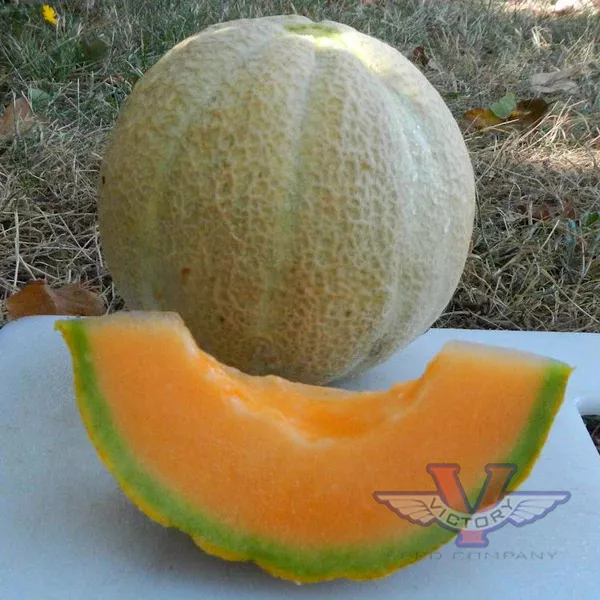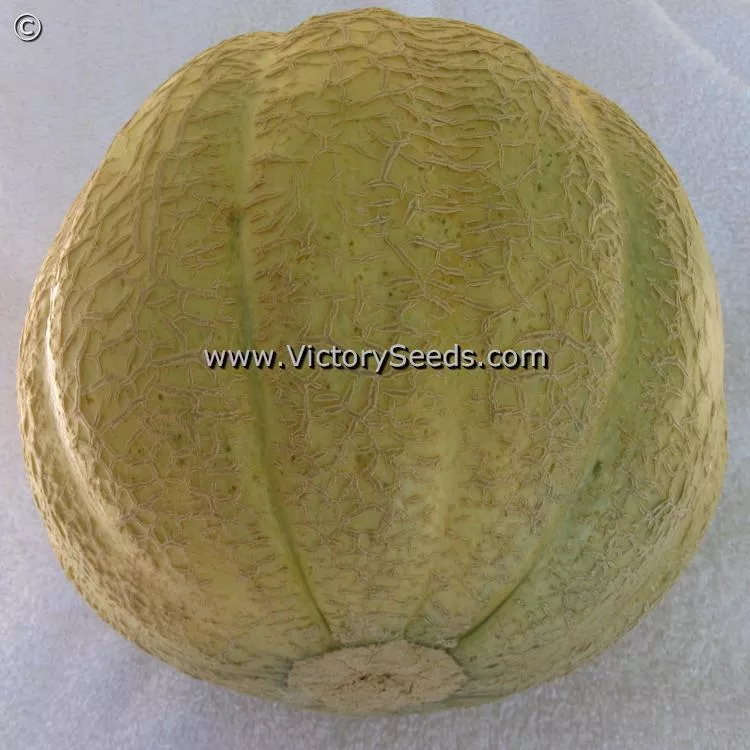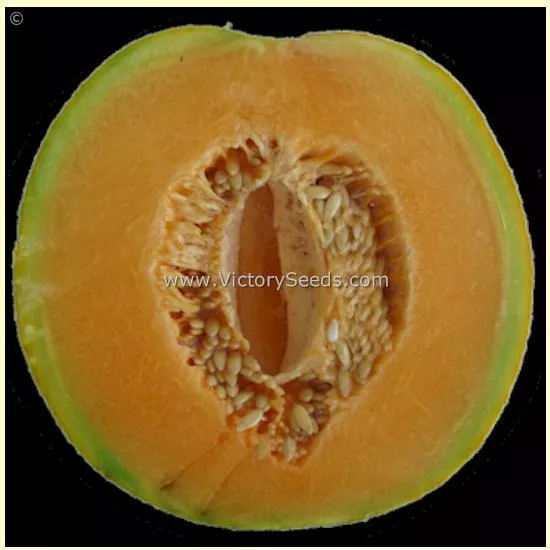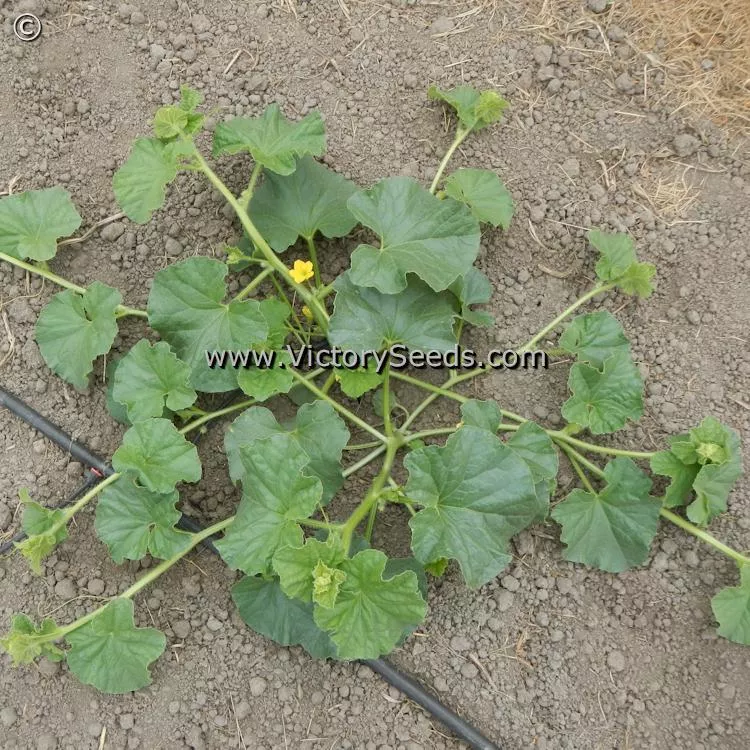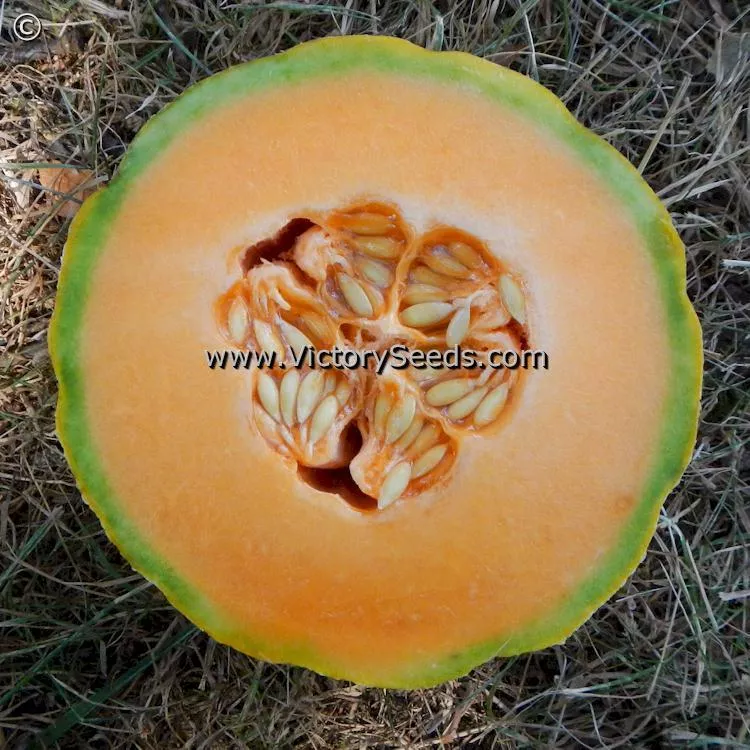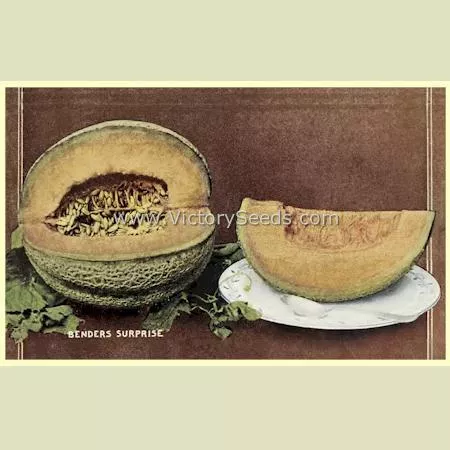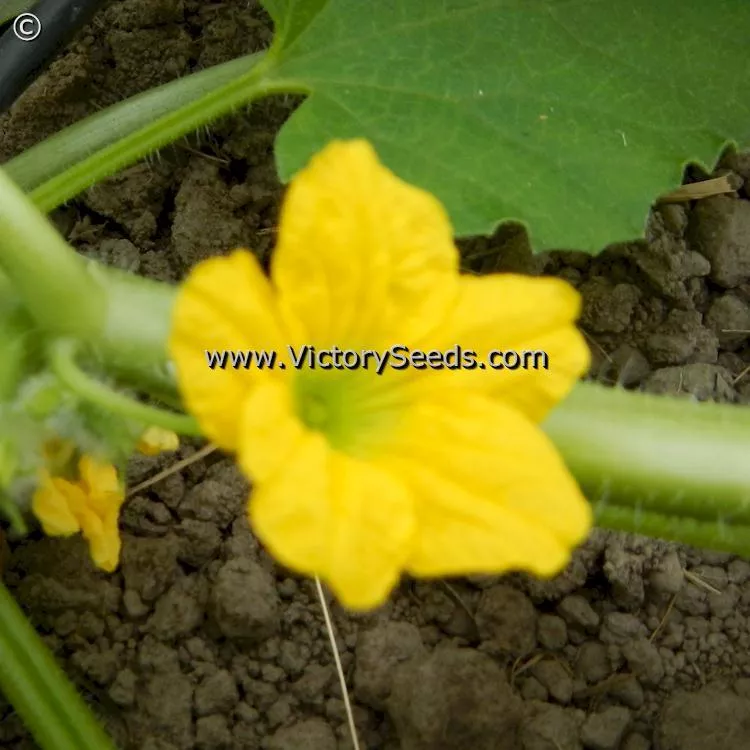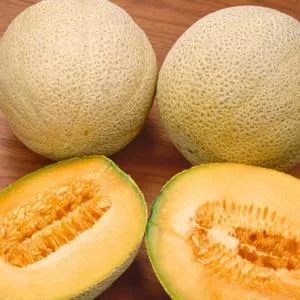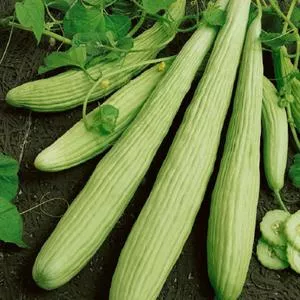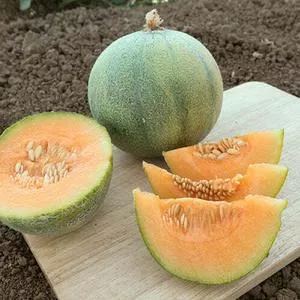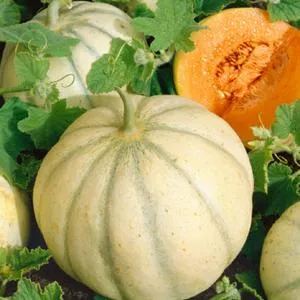







Bender's Surprise Muskmelon
Cucumis melo
Price: $4.45
SKU: 325029195 days - 'Bender's Surprise' fruit are oblong to round in shape, distinctly ribbed, coarsely netted, averaging six to seven pounds. Its flesh is salmon colored, very thick, and delivers a real nice, sweet, 'old time' muskmelon flavor. The rinds turn a grayish yellow at maturity.
In 1884, on a farm rented from his father, 23 year-old market grower Charles Bender[1,2] of New Scotland, New York began growing and experimenting with melons. Beginning with the popular variety of the day, 'Surprise' (introduced 1876), Mr. Bender worked to develop a melon that would surpass any of his competition for the New York City market.
The melon that he eventually created through breeding and years of selection became in such high demand that he was able to command prices in excess of ten times those of typical market prices. Its reputation and fame spread among the high-end restaurants and hotels, such as the Waldorf-Astoria, the Savoy, and the Lambs, where it was added to the menus in season. For years, the Belmont Hotel had a standing order for ten, fifty-pound baskets per day; a tab of about $2,200 per month (in pre-1910 dollars!).[1]
He called his creation 'Golden Queen' and as a produce farmer in a highly competitive environment, he originally guarded the seed supply with extreme measures. When each melon was sold, it was cut in half, the seeds scooped out and saved, and the two halves put back together and handed to the customer.[1]
Eventually, Mr. Bender worked out a deal with the Joseph Harris Seed Company who began offering the seed to its customers in their 1917 seed catalog. They introduced it as follows:
In 1884, on a farm rented from his father, 23 year-old market grower Charles Bender[1,2] of New Scotland, New York began growing and experimenting with melons. Beginning with the popular variety of the day, 'Surprise' (introduced 1876), Mr. Bender worked to develop a melon that would surpass any of his competition for the New York City market.
The melon that he eventually created through breeding and years of selection became in such high demand that he was able to command prices in excess of ten times those of typical market prices. Its reputation and fame spread among the high-end restaurants and hotels, such as the Waldorf-Astoria, the Savoy, and the Lambs, where it was added to the menus in season. For years, the Belmont Hotel had a standing order for ten, fifty-pound baskets per day; a tab of about $2,200 per month (in pre-1910 dollars!).[1]
He called his creation 'Golden Queen' and as a produce farmer in a highly competitive environment, he originally guarded the seed supply with extreme measures. When each melon was sold, it was cut in half, the seeds scooped out and saved, and the two halves put back together and handed to the customer.[1]
Eventually, Mr. Bender worked out a deal with the Joseph Harris Seed Company who began offering the seed to its customers in their 1917 seed catalog. They introduced it as follows:
"We never raised finer muskmelons than the Bender's Surprise which we grew the past season. The Irondequoit melon, which we have recommended for years, and which has given the greatest satisfaction among our customers, is of similar type, but the strain called "Bender's Surprise" is in some respects superior.
The fruit grows quite large (weighing about 5 lbs.), is of oval shape and light green color, turning when ripe to a golden hue which shows through the netting.
The flesh is deep orange yellow, very thick, unusually firm, and of exquisite flavor and can be eaten right down to the outer rind, which is only a quarter of an inch thick."[3]
His operation grew to the point that he was shipping melons to thirty-three states as well as from his farm. The reputation of the melon was so great, people from cities in the region would travel there on the weekends to eat some of these late summer treats and take in the sites and fresh air surrounding the farms.[1] Our seed was originally sent to us by David Pendergrass at New Hope Seed in Middle Tennessee.The fruit grows quite large (weighing about 5 lbs.), is of oval shape and light green color, turning when ripe to a golden hue which shows through the netting.
The flesh is deep orange yellow, very thick, unusually firm, and of exquisite flavor and can be eaten right down to the outer rind, which is only a quarter of an inch thick."[3]
Genetic Classification: Open Pollinated
Planting Instructions:
The seeds can be directly sown in spring after the soil has warmed or started indoors three to four weeks before your last expected frost.
Indoors, plant two to three seeds per pot, ½ inch deep, thinning to best plant. Do not disturb roots. Outdoors, plant six to eight seeds, ½ inch deep, in hills spaced four feet apart. Transplant or thin to three plants per hill.
Young plants are cold sensitive and some cover protection at nights may be required. Mulch or cultivate to control weeds.
Informational References:
- "Charles Bender and the Bender Melon Farm: A Local History," by Dennis Sullivan, Town of New Scotland Historical Society, Slingerlands, New York, 1990. [Sent to Victory Seed Company by the author in 2011.]
- "Melons for the Passionate Grower," by Amy Goldman, Artisan, New York, New York, 2002, page 76.
- "Harris Seeds," Joseph Harris Seed Company, Coldwater, New York, 1917, page 12.
Customer Reviews:
Do you have experience with this one? 📝 📣 Write a review!
No reviews have been posted yet.

